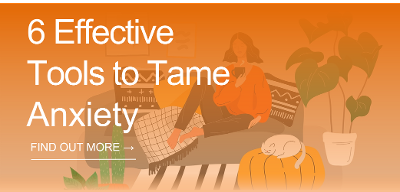What Does Your Well-being at Work Look Like?
No doubt, stress and fear still linger as the world begins to poke its heads out from behind the front door, looking for signs of normalcy. We all know by now that "normal" is new and different but working for a living has not changed. People still spend most of their day in a working environment, so it makes sense that they think their employer should be finding ways to support their emotional well-being.
When surveyed, 76% of employees believed their employer
should be doing more for their well-being—at work.
Many factors have affected employee productivity since COVID-19, including:
-
Poor mental health
-
Concerns about pay cuts and job loss
-
Long working hours
-
Blurred lines between work and home life
-
Being locked down with family members or roommates
-
Juggling work, home and homeschooling
Stress levels are high as people struggle to cope with the fear of COVID and the uncertainty of adequately providing for their families.
Is Your Well-being Program Doing its Job?
In the near aftermath of the pandemic, one thing is universal. The importance of people's physical and mental health is becoming top dog, outranking everything else in the workplace.
Eighty-four percent of employees agree that their mental health is more important now than it was a year ago. Eighty-seven percent think that access to quality health care is more important now than it has ever been.
Working from home may seem like the ideal solution, but employees have found home office's just a different kind of stress that no one has addressed. The top health concerns from employees working from home include:
- Gaining weight
- Depression
- Anxiety
- Stress
- Being overwhelmed
Though working from home is great for many workers, there is a large part of the workforce (81%) who want to combine working from home and working from the office. Some (61%) prefer to work from the office full-time and hope to return within the next six months, but their fear of catching COVID rises from sixteen to forty-eight percent.
Well-being support is needed whether people are working from the home or office as each has its challenges. Yet only twenty-five percent of employees rate their employer's support as good.
Forty-two percent of employers think their health and well-being support is very good. This is a significant difference of opinion on how employee support looks and feels.
There is a disconnect in the workforce; reconnecting is a matter of companies evolving to embrace employee health and well-being and provide a program that meets everyone's needs.
One Size Does Not Fit All
Employers face some new challenges in supporting employee well-being because the needs of their employees are diverse. Some work at home, others work in the office. Older employees face unique health challenges, and younger employees with different needs are seeking support. No two companies or even countries are feeling the impact in the same way.
-
31% of Baby Boomers consider mental health a serious issue
-
60% of Millennials also feel mental health is a serious issue
-
75% of Gen Z feel overwhelmed and believe well-being is an urgent issue
Thoughts, beliefs, opinions, needs and solutions are different in a diverse work environment. The one common theme that each generation feels is the impact of stress on their physical and mental well-being.
A typical response from employers may be implementing or offering a one-size-fits-all approach to employee well-being, such as offering gym memberships or teaching onsite yoga classes. But understanding the demographics of the workforce is imperative if a wellness program is going to meet everyone's needs.
Workplace leaders are in the perfect position to get the ball rolling and provide much-needed relief to their employees. It begins with a conversation around mental health, well-being and getting employee input.
Throughout the process, leaders must support the program and encourage employee engagement. A program that offers an advisor's services who can explain complicated incentives and answer questions is key to getting employee participation.
Prepping the Star of the Show – Building Wellness into the Workplace
-
Set a goal - A successful program must have goals that will reduce absenteeism and increase workplace well-being.
-
Talk to employees - Include as many employees and management as possible in the quest for a wellness plan by utilizing surveys to determine what types of wellness programs people want to see. Study the data.
-
Design a benefits plan – The results of your data will allow you to develop a plan that integrates employee needs with company policy. Identifying community health partners can be a big help at this stage.
-
Implement the program – The plan should include preventative programs around being more active, healthy eating, disease management, mental health, and other well-being practices.
-
Evaluate – Work with managers to survey participants and get feedback and suggestions. Generate reports that include changes of behavior. Reward success stories.
Getting workers' thoughts on what they need most in a program shows them they are valued and that the company cares about them. It also gets their buy-in to participate.
Companies should stay positive and create a program to support employees and build wellness into the company culture at all levels.
Set Your Company's Well-being Culture Apart from the Others
The question is no longer should you build a wellness plan. It's, how effective is your wellness plan at lifting employee morale, building company unity, and decreasing stress?
You can set your company apart from others by utilizing a Ulliance Life Advisor, sometimes referred to as a Wellness Coordinator. Life Advisors are skilled at designing, planning and implementing health and wellness programs for companies based on their culture and needs.
They ensure the plan runs smoothly by answering employee questions, clarifying the program incentives, and supporting employees with one-on-one coaching to minimize stress. They also refer employees to appropriate resources when necessary.
Utilizing a Live Advisor helps reduce the stress of building and maintaining a well-being program by offering a solution-focused model that supports employees while increasing engagement.
For more information on how we can help your business culture thrive with our diverse well-being solutions, connect with us here!
Now more than ever, your employees need emotional support and resources. The pandemic has created a whole new set of physical, financial and emotional stressors that have woven their way into the home and workplace.
Hundreds of organizations support their employees through The Ulliance Life Advisor Employee Assistance Program (EAP). Investing in the right EAP to support your employees before, during and after they face adverse events will help them and help you. Visit ulliance.com, or call 866-648-8326.
References:
Nine steps to establishing a wellness program. (2019). Retrieved from biggs: https://biggsinsurance.com/nine-steps-to-establishing-a-wellness-program/
Qian, A. (2020, October 20). Trends, Products and Best Practices to Help You Create a Work Made Human Experience. Retrieved from Oracle: https://blogs.oracle.com/oraclehcm/addressing-mental-health-in-the-workplace?source=:ad:pas:go:dg:hcm:RC_WWMK160606P00037C0001:Main_Ad
Taylor, T. (2019, November 19). 11 Steps to Start A corporate Employee Wellness ProgramT. Retrieved from The Balance Careers: https://www.thebalancecareers.com/corporate-employee-wellness-program-1177989
(2020). The Employer Role: Mental Health During COVID-19. National Health Council, Itasca IL. Retrieved from https://www.nsc.org/getmedia/ff3ae2b5-e214-4aa8-aac0-7676488dcacb/checklist-employer-role-mental-health.pdf


